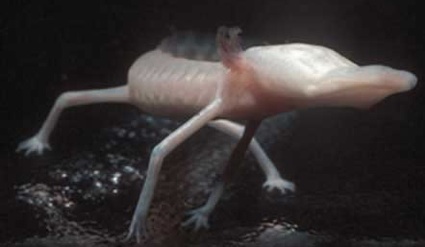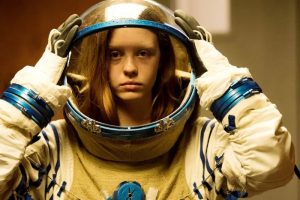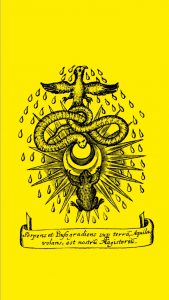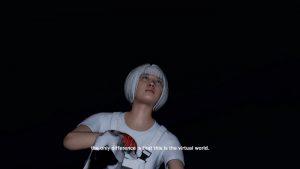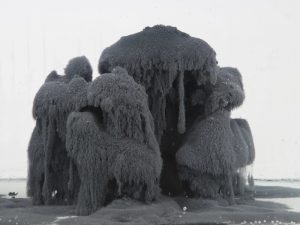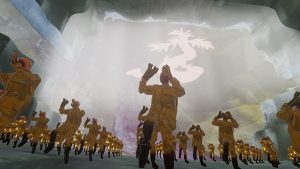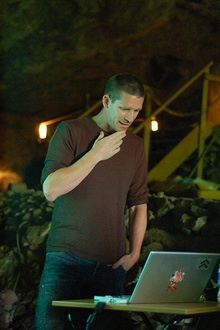 Image by Iman Moradi
Image by Iman Moradi
More notes from the second edition of Biorama, a symposium and workshop that invited artists and experts to share their views, works and discoveries about the biology of the underground. Andy Gracie kicked off the artists presentations with a compelling introduction to the mythological theories about the structure of the Earth and the civilization, often called the Agharta, that live inside it.
Let’s get this straight first: the Earth is hollow and other societies live in there. Andy brought us to the cave in order to be closer to them. Modern science doesn’t pay much attention to the theory of the Hollow Earth, or Agharta, but this has not always been the case:
Astronomer Edmund Halley (he of the comet) was fascinated by the earth’s magnetic field. He noticed the direction of the field varied slightly over time and his theory was that there existed not one, but several, magnetic fields. In 1692, he put forth the idea of a hollow Earth with inner concentric spheres nested into each other and rotating at different speeds. According to Halley, the spheres were separated by different atmospheres separated these spheres, and each had its own magnetic poles. These inner regions were luminous and probably hosted other civilizations. He speculated that escaping gas caused the Aurora Borealis.
Mathematician and physicist Leonhard Paul Euler believed that there were two entrances to the Hollow Earth. One was in the North Pole, the other in the South Pole.
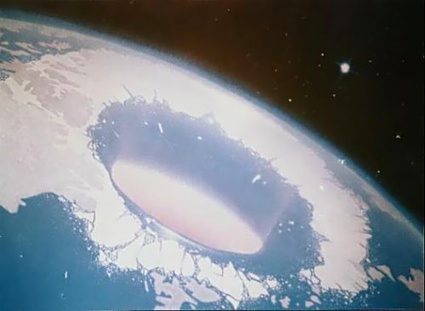 Polar entrance to Inner Earth
Polar entrance to Inner Earth
In 1947 Admiral Byrd would have given the first scientific evidence of a Hollow Earth. A “lost” diary reports that the explorer went on a mission to fly over the North Pole. It was not his first trip there. Actually, Byrd was the first person to fly over the North Pole in 1926. This second time, however, he discovered the entrance at the north poles and flew through the hollow earth where he observed other civilizations and enormous herds of giant mammoths.
Another expedition in 1956 would have located the second entrance in the South Pole. The U.S. government kept the discovery secret and didn’t allow anyone to cross the pole anymore which, obviously increased rumors of a conspiracy.
Back in 1942, the Nazi sent their own expedition to find these openings that, according to them, would have lead to the land of the original Aryans and make alliance with them.
A photo from the NASA would be proof:

Satellite images do not display any existence of a hole in the Earth. What you get sometimes however is a black dot over the pole that only reveal an absence of information.
On November 25, 1912, the United States granted the patent number 1096102 to Marshall B. Gardner for “The Hollow Earth Theory”.
Others “proofs” that this hollow Earth life exist have been put forward: certain birds migrate to the North, aurora borealis, anomalous compass readings in high latitudes, north and south, etc.
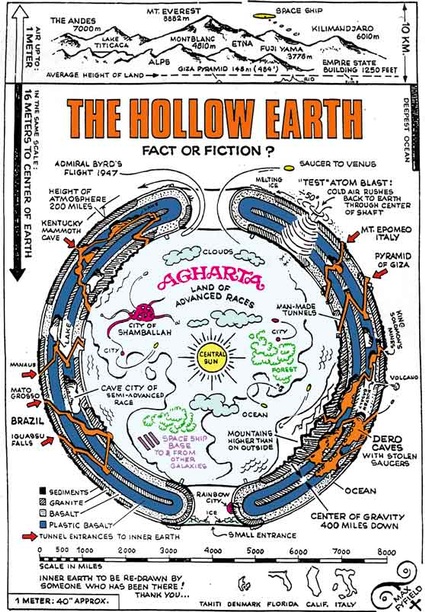
Andy invited us to participate to the symposium inside a cave so that we would be closer to the only creatures we know of that live below the earth’s surface and are so completely independently from the sun that they die when exposed to light. These organisms are called troglobites. There are fish, shrimp, crayfish, bacteria, molluscs and insects.
The most intriguing of the troglobitesis is perhaps the proteus anguinus, or the olm. In Slovenia, a tourism industry exists for those who want to cathc a glimpse of the cave-dwelling creature. The olms are blind, yet have barely visible, regressed eyes covered by skin. Their body is covered by a translucent skin with two pink gills at the back of the head. Unlike other amphibians that metamorphose into an adult form, the olm retains its larval features, a phenomenon known as neotony (via).
Andy then explained us briefly Jakob von Uexküll‘s theory of ‘umwelt’, an organism’s self-centered perception of the environment. Uexküll theorised that organisms can have different umwelten, even though they share the same environment. In order to be able to make sense of the world around, a creature would look in other organisms for a series of elements that carry some significance.
For example the tick’s umwelt is reduced to only three (biosemiotic) carriers of significance: The odor of butyric acid, which emanates from the sebaceous follicles of all mammals + The temperature of 37 degrees celsius (corresponding to the blood of all mammals) + The hairy typology of mammals. That’s how they recognize if they are in front of a mammal they can parasite.
Some parasites even hack the nervous systems of their host in order to control their behaviour and establish better conditions for their own survival.
While looking for online information about the phenomenon, i stumbled upon this hair-raising video that explains how spores from a parasitic fungus come to infect the brain and changes in behaviour of a jungle ant.
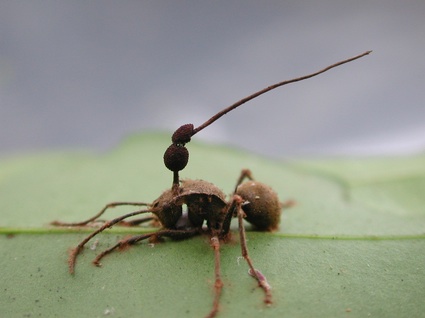 Carpenter ant infected by Cordyceps unilateralis
Carpenter ant infected by Cordyceps unilateralis
This is going to put me off mushrooms for some time. But back to the Umwelt. Jakob von Uexküll’s theory of the Umwelt made him a pioneer of semiotic biology, or biosemiotics, a field that addresses the complexities of biological processes by studying the production, action and interpretation of signs in the biological realm. Some researchers have put forward the question “Do Does a robot have an Umwelt?” There doesn’t seem to be any agreement on the answer.
Giambattista della Porta was an Italian polymath who lived in Naples at the time of the Scientific Revolution. In 1560, Della Porta founded a scientific society called the Academia Secretorum Naturae, one of the first scientific societies in Europe and their aim was to study natural sciences. The Academia Secretorum Naturae was compelled to disband when its members were suspected of dealing with the Occult as, at the time, it was regarded as blasphemous to reveal the secrets of nature. Della Porta was summoned to Rome by Pope Paul V.
Andy Gracie drew a parallel between the Academia Secretorum Naturae and bioartists today who start their research in a DIY fashion. People like Garnet Hertz and Anthony Hall are amateur scientists who like to learn for themselves and uncover nature. Is it art? Is it science? Does it really matter?
Image on the homepage PBS.

